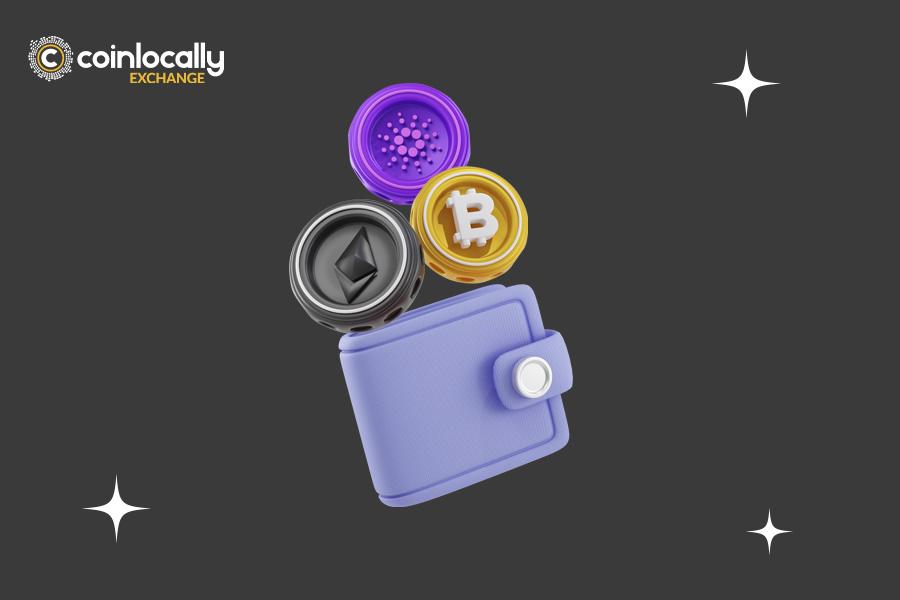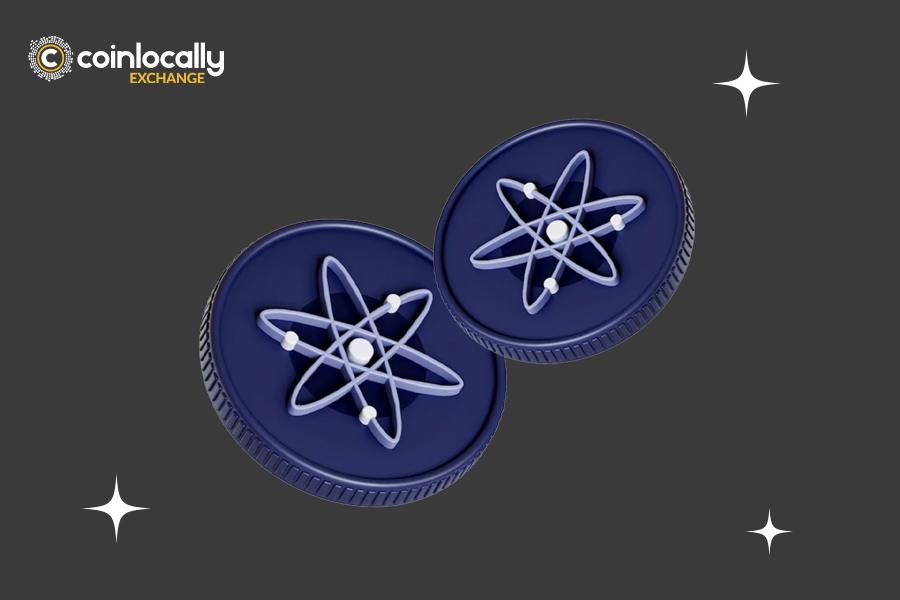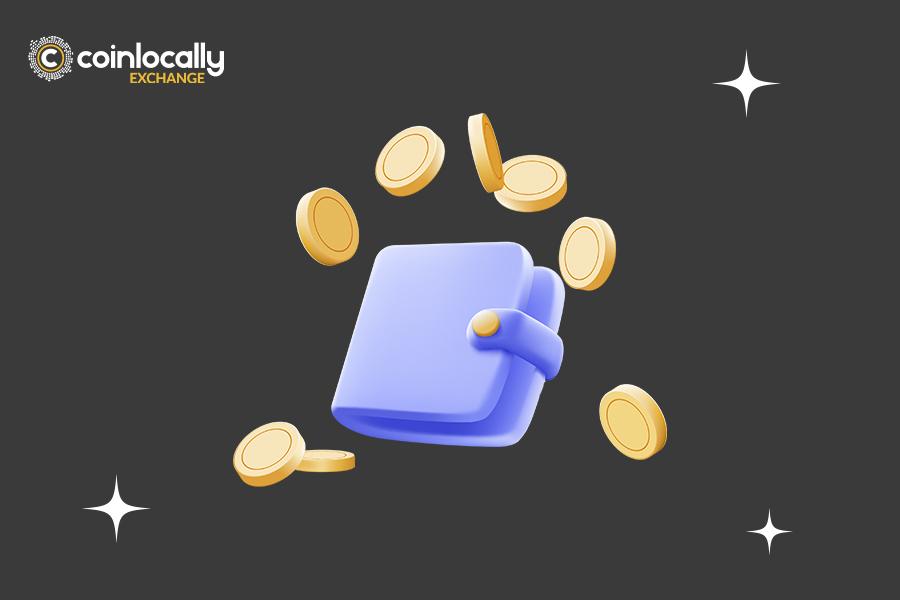How to buy Bitcoin? Bitcoin wallet apps and cryptocurrency centralized exchanges (CEXs) that accept fiat money are the two most common methods for purchasing Bitcoin.
Using a self-custodial Bitcoin wallet program that takes money is the safest option because CEXs pose severe hazards to your digital assets’ control and security. If you opt to use a CEX, it is strongly advised against holding your Bitcoin on a CEX for an extended period of time.
Quick Getaway: Looking for a safe platform that offers the most secure cryptocurrency trading platform? Sign up with Coinlocally and enjoy the best Cryptocurrency trading strategies.
Table of Contents
• Key points to consider when buying Bitcoin
• How is Bitcoin different from Ethereum?
• Bitcoin vs. Ethereum: Key Differences
• Bitcoin mining for beginners
Key points to consider when buying Bitcoin
The three essential aspects to consider before purchasing Bitcoin or buying crypto are as follows:
1. Payment method
2. Platform/venue used
3. Where your Bitcoin goes,
Credit cards, bank transfers, payment apps (PayPal, Apple Pay, Google Pay, Samsung Pay, and so on), face-to-face with cash, and even swaps are all options for payment. Each payment option has advantages and disadvantages in terms of ease, privacy, and associated expenses.
1. Digital wallet providers, centralized spot exchanges, OTC desks (private ‘Over-The-Counter’ exchange services largely used Platforms/venues for obtaining Bitcoin include high-net-worth individuals, peer-to-peer markets, and even payment programs such as PayPal.
Of course, it is also feasible to purchase Bitcoin in person. For example, you may send your friend cash in return for an agreed-upon sum of bitcoin.
There are several alternatives for where your Bitcoin will go after you acquire it:
2. Into a Bitcoin wallet that you control (a’self-custodial’ wallet such as the Bitcoin.com Wallet)
3. Into a Bitcoin wallet controlled by someone else (for example, a centralized cryptocurrency exchange or a payment app like PayPal).
When you keep Bitcoin in a wallet that you control, often known as a self-custody wallet (or a ‘non-custodial’ wallet), you never have to obtain permission to use it. This implies you won’t have to wait for a third party to approve the transaction, such as a centralized exchange. It also means that you can transmit Bitcoin whenever and wherever you choose.
Many custodial Bitcoin wallets, on the other hand, set severe restrictions on what you can do with your Bitcoin. For example, you may be forced to register an address before sending Bitcoin to it, and you may have to wait several days before making a withdrawal.
Withdrawals of any kind are simply not authorized in some instances (PayPal, for example). It’s also not uncommon for your account to be completely frozen. For example, if you’ve been identified as a security or fraud risk, you could be locked out of your account with no way of regaining access.
You may also customize the ‘network fee’ each time you send with the finest self-custodial Bitcoin wallets. This implies you can save money on transaction expenses when you aren’t in a hurry or spend more money to transmit faster when you are.
The most essential benefit is that self-custody wallets are more secure. As long as you follow key management best practices, you will never be hacked or exposed to counter-party risks like a centralized exchange being hacked or going bankrupt.
How is Bitcoin different from Ethereum?
Bitcoin and Ethereum are two of the world’s most popular cryptocurrencies. They both use blockchain technology, but there are several key differences between them. This article delves into the distinctions, summarized in a handy chart at the end.
Understanding Bitcoin
Bitcoin (BTC) was the first cryptocurrency, founded in 2009 by an unidentified individual or group known as Satoshi Nakamoto, and it is still the most well-known and widely used today. Bitcoin was established to provide a decentralized mechanism of value transmission as a digital alternative to existing currencies.
A network of nodes cryptographically verifies Bitcoin transactions, which are then stored on a public ledger known as a blockchain.
Understanding Ethereum
Vitalik Buterin proposed Ethereum (ETH) in late 2013 and brought it to life in 2015. While Ethereum is a cryptocurrency, its fundamental goal goes beyond the mere exchange of cash. Instead, Ethereum is intended to be a platform that allows peer-to-peer contracts and apps to be developed and run without the need for third-party control, approval, or intervention. These programs, known as decentralized applications or DApps, are powered by Ether (ETH), Ethereum’s own cryptographic coin.
In other words, Ethereum is a programmable blockchain that enables developers to leverage the blockchain’s infrastructure to create their own projects, which Bitcoin does not allow.
Bitcoin vs. Ethereum: Key Differences
Purpose
The primary distinction between Bitcoin and Ethereum is their intended use. Bitcoin was designed to be a decentralized digital cash system alternative to traditional money.
Ethereum, on the other hand, is more than just a cryptocurrency. It is a platform for creating and deploying smart contracts and decentralized apps (DApps). The Ethereum blockchain verifies and records transactions and supports DApps and smart contracts that may communicate without the need for an intermediary.
Technology
Different types of blockchain technology are used by Bitcoin and Ethereum. Bitcoin has a Proof-of-Work (PoW) consensus method in which miners solve complicated mathematical problems to validate transactions and add them to the blockchain. This method demands a significant quantity of computer power and energy.
Ethereum, on the other hand, began with PoW but has since switched to a mechanism known as Proof-of-Stake (PoS) with the release of Ethereum 2.0. Validators are chosen to create new blocks in PoS depending on the amount of cryptocurrency they own and are prepared to’stake’ as collateral. It is a less energy-intensive approach than PoW.
Scalability
The Proof-of-Work consensus mechanism used by Bitcoin is not very scalable. This means that the network can only handle a certain amount of transactions per second, with a maximum of approximately 7 transactions per second.
The Proof-of-Stake consensus method in Ethereum is more scalable; it can process up to 30 transactions per second but also has scalability difficulties. However, Ethereum is actively tackling these scaling difficulties with upgrades such as PoS transition and a forthcoming sharding upgrade.
Supply
A cryptocurrency’s supply refers to the total quantity of coins that have been and can ever be mined. Bitcoin’s supply is restricted to 21 million coins.
In contrast, Ethereum has no maximum supply limit, which means that an infinite number of Ether can be created. In practice, however, Ether’s inflation rate is low to negative.
Use cases
Bitcoin’s principal application is as a digital currency. Many regard it as ‘digital gold,’ serving as both a store of wealth and a hedge against traditional financial market instability. Its primary application is as a digital currency or a store of value.
Ethereum, on the other hand, has greater applications due to its built-in smart contract capabilities. Smart contracts are, at their core, decentralized programs. Because of this feature, Ethereum is the backbone of the Decentralized Finance (DeFi) movement, which seeks to rebuild existing financial institutions without the need for trusted third parties.
Ethereum is also the preferred platform for the majority of non-fungible tokens (NFTs), which are one-of-a-kind digital assets that can represent ownership or proof of authenticity for everything from digital art to virtual real estate. Decentralized Autonomous Organizations are another application.
Price
Bitcoin and Ethereum’s price action has been volatile, like most crypto assets. Given its larger market cap and widespread use, Bitcoin has usually been the primary driver of the crypto market. When Bitcoin’s price rises, it often pulls up the price of other cryptocurrencies, including Ethereum, and vice versa. Bitcoin’s price action is influenced by several factors, including supply and demand, market sentiment, regulatory news and events, and economic events.
Ethereum’s price, while impacted in large part by Bitcoin’s, is also influenced by factors unique to Ethereum, such as updates to its platform, its usage in DeFi, and demand for blockspace. Ethereum’s price, in turn, influences the price of smaller crypto assets, especially those that use Ethereum’s blockspace, such as DeFi, NFT, and DAO projects.
Bitcoin mining for beginners
The process of donating your computer’s processing capabilities to secure network consensus on a blockchain while earning cryptocurrency is known as cryptocurrency mining. Miners solve difficult mathematical calculations to verify transactions and add them to the digital ledger. While Proof-of-Stake blockchains do not require or enable mining, mining is required on Proof-of-Work blockchains such as the Bitcoin blockchain to bring new currencies into circulation and maintain the blockchain network’s integrity and security.
While mining operations provide a good method for reaching consensus and minimizing abuses, they also have substantial drawbacks, such as detrimental environmental impact. Furthermore, mining necessitates significant computer power, energy, and technical experience, making it a difficult undertaking for newcomers.
Mining cryptocurrency on a blockchain, such as the Bitcoin network, has an extremely high barrier to entry. Bitcoin miners must purchase specialized equipment and meet rising energy bills.
How to Mine Cryptocurrency
The process of adding new transactions to the blockchain, the decentralized database that records all Bitcoin transactions, is known as bitcoin mining. Miners can earn bitcoin as a reward for confirming these transactions and solving challenging mathematical puzzles.
Here’s a step-by-step guide to mining Bitcoin:
1. Get a Bitcoin Wallet:
To begin mining, you’ll need a Bitcoin wallet, which is a digital wallet where you may keep your bitcoins. There are several sorts of wallets accessible, including hot and cold wallets.
2. Select Your Mining Hardware:
Bitcoin mining requires ASIC hardware, which raises your chances of success dramatically.
3. Choose a Mining Pool:
Bitcoin mining is a very competitive activity, and earning Bitcoin on your own is difficult. Mining pools enable you to pool your computer power with other miners to improve your chances of solving a block and earning Bitcoin. Consider the pool’s fees, size, and reputation when selecting one.
4. Download Mining Software
Download mining software is utilized to communicate with the mining pool and the blockchain network. Select one that is compatible with your hardware and operating system from the different mining software options available.
5. Configure Your Mining Software
After downloading your mining program, you must set it up by connecting your mining hardware to the mining pool. To guarantee that your mining software is properly configured, carefully follow the instructions.
6. Start Mining
You can begin mining after configuring your mining program. The software will leverage your hardware to tackle challenging mathematical problems and validate blockchain transactions. If you correctly solve these challenges, you will be rewarded with Bitcoin.
7. Monitor Your Mining Activity
Bitcoin mining may be a complicated and sophisticated operation, so keeping track of your mining activity is critical. Keep a check on the performance of your mining pool and the temperature and performance of your hardware to ensure that your mining is successful and lucrative.
You can begin mining Bitcoin for rewards by following these steps. By joining a Bitcoin mining pool, you can increase your chances of receiving mining rewards. Keep in mind that Bitcoin mining is a highly competitive activity that demands patience, persistence, and the proper hardware and software to succeed.
Bitcoin investment strategies
Is Bitcoin a Good Investment?
One of the most frequently asked questions about Bitcoin is, “Is Bitcoin a good investment?”
The truth is that no investment is intrinsically “good” or “bad.” It completely depends on your risk tolerance, investing strategy, and financial objectives. Before contemplating Bitcoin as an investment, you should thoroughly examine your own goals and determine what you hope to accomplish with your financial activity. Do you want to earn money on the side? Do you want to become a full-time investor? Should you save for retirement? The answers will help you decide if Bitcoin is a good investment.
Bitcoin is a high-risk investment due to its fluctuating nature. This means that the value of Bitcoin can fluctuate substantially in a matter of hours or days.
Bitcoin, like all cryptocurrencies, has no fundamental value. It is not backed by any physical object, such as gold or silver, and there is no central regulator to keep the value stable. Furthermore, the value of Bitcoin is not related to the revenues of any single firm. Bitcoin’s value is determined by market demand. The value of Bitcoin will rise as more people purchase it. The value of Bitcoin will fall as fewer people purchase it.
To make a lot of money with Bitcoin, you may have to rely on “timing the market,” which is a difficult and risky trading method in general. Nonetheless, there is a chance of profit.
Bitcoin vs. Other Investments
Choosing which investments to pursue and which to avoid can be a difficult task. Your decision will determine whether you enjoy high profits for years to come or lose everything.
Bitcoin is one of the world’s trendiest subjects right now, but it is not the only method to invest your money, which prompts the question: How does Bitcoin compare to other wealth-building vehicles?
While Bitcoin is its own investment vehicle, it is vital to recognize that it has the potential to cross investment borders. Bitcoin can be used alongside some of today’s most valuable assets. The real estate industry, in particular, might profit significantly from “tokenization.”
According to Tom Winter, CRO and co-founder of DevSkiller, “tokenization is the process of creating a virtual token representing ownership of a real estate interest that exists on a blockchain (The core technology behind Bitcoin).”
“Tokenization has the potential to revolutionize the global real estate market.” It provides investors with numerous advantages over conventional investing possibilities,” Winter says.
Conclusion
In conclusion, investing in Bitcoin can provide opportunities for financial growth and diversification. However, it is crucial to understand the risks involved and take necessary precautions to secure your assets. Conducting thorough research, using secure wallets, and being mindful of the platforms you choose are essential steps in safely navigating the world of Bitcoin investment.






